Fannie Mae 2010 Annual Report Download - page 12
Download and view the complete annual report
Please find page 12 of the 2010 Fannie Mae annual report below. You can navigate through the pages in the report by either clicking on the pages listed below, or by using the keyword search tool below to find specific information within the annual report.-
 1
1 -
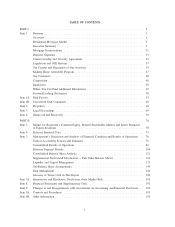 2
2 -
 3
3 -
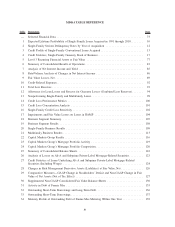 4
4 -
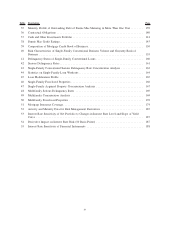 5
5 -
 6
6 -
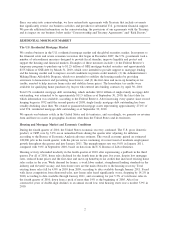 7
7 -
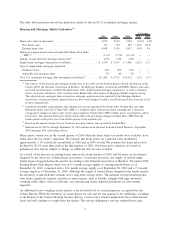 8
8 -
 9
9 -
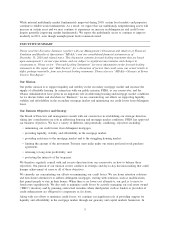 10
10 -
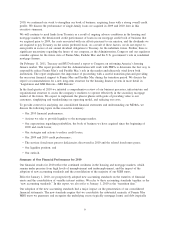 11
11 -
 12
12 -
 13
13 -
 14
14 -
 15
15 -
 16
16 -
 17
17 -
 18
18 -
 19
19 -
 20
20 -
 21
21 -
 22
22 -
 23
23 -
 24
24 -
 25
25 -
 26
26 -
 27
27 -
 28
28 -
 29
29 -
 30
30 -
 31
31 -
 32
32 -
 33
33 -
 34
34 -
 35
35 -
 36
36 -
 37
37 -
 38
38 -
 39
39 -
 40
40 -
 41
41 -
 42
42 -
 43
43 -
 44
44 -
 45
45 -
 46
46 -
 47
47 -
 48
48 -
 49
49 -
 50
50 -
 51
51 -
 52
52 -
 53
53 -
 54
54 -
 55
55 -
 56
56 -
 57
57 -
 58
58 -
 59
59 -
 60
60 -
 61
61 -
 62
62 -
 63
63 -
 64
64 -
 65
65 -
 66
66 -
 67
67 -
 68
68 -
 69
69 -
 70
70 -
 71
71 -
 72
72 -
 73
73 -
 74
74 -
 75
75 -
 76
76 -
 77
77 -
 78
78 -
 79
79 -
 80
80 -
 81
81 -
 82
82 -
 83
83 -
 84
84 -
 85
85 -
 86
86 -
 87
87 -
 88
88 -
 89
89 -
 90
90 -
 91
91 -
 92
92 -
 93
93 -
 94
94 -
 95
95 -
 96
96 -
 97
97 -
 98
98 -
 99
99 -
 100
100 -
 101
101 -
 102
102 -
 103
103 -
 104
104 -
 105
105 -
 106
106 -
 107
107 -
 108
108 -
 109
109 -
 110
110 -
 111
111 -
 112
112 -
 113
113 -
 114
114 -
 115
115 -
 116
116 -
 117
117 -
 118
118 -
 119
119 -
 120
120 -
 121
121 -
 122
122 -
 123
123 -
 124
124 -
 125
125 -
 126
126 -
 127
127 -
 128
128 -
 129
129 -
 130
130 -
 131
131 -
 132
132 -
 133
133 -
 134
134 -
 135
135 -
 136
136 -
 137
137 -
 138
138 -
 139
139 -
 140
140 -
 141
141 -
 142
142 -
 143
143 -
 144
144 -
 145
145 -
 146
146 -
 147
147 -
 148
148 -
 149
149 -
 150
150 -
 151
151 -
 152
152 -
 153
153 -
 154
154 -
 155
155 -
 156
156 -
 157
157 -
 158
158 -
 159
159 -
 160
160 -
 161
161 -
 162
162 -
 163
163 -
 164
164 -
 165
165 -
 166
166 -
 167
167 -
 168
168 -
 169
169 -
 170
170 -
 171
171 -
 172
172 -
 173
173 -
 174
174 -
 175
175 -
 176
176 -
 177
177 -
 178
178 -
 179
179 -
 180
180 -
 181
181 -
 182
182 -
 183
183 -
 184
184 -
 185
185 -
 186
186 -
 187
187 -
 188
188 -
 189
189 -
 190
190 -
 191
191 -
 192
192 -
 193
193 -
 194
194 -
 195
195 -
 196
196 -
 197
197 -
 198
198 -
 199
199 -
 200
200 -
 201
201 -
 202
202 -
 203
203 -
 204
204 -
 205
205 -
 206
206 -
 207
207 -
 208
208 -
 209
209 -
 210
210 -
 211
211 -
 212
212 -
 213
213 -
 214
214 -
 215
215 -
 216
216 -
 217
217 -
 218
218 -
 219
219 -
 220
220 -
 221
221 -
 222
222 -
 223
223 -
 224
224 -
 225
225 -
 226
226 -
 227
227 -
 228
228 -
 229
229 -
 230
230 -
 231
231 -
 232
232 -
 233
233 -
 234
234 -
 235
235 -
 236
236 -
 237
237 -
 238
238 -
 239
239 -
 240
240 -
 241
241 -
 242
242 -
 243
243 -
 244
244 -
 245
245 -
 246
246 -
 247
247 -
 248
248 -
 249
249 -
 250
250 -
 251
251 -
 252
252 -
 253
253 -
 254
254 -
 255
255 -
 256
256 -
 257
257 -
 258
258 -
 259
259 -
 260
260 -
 261
261 -
 262
262 -
 263
263 -
 264
264 -
 265
265 -
 266
266 -
 267
267 -
 268
268 -
 269
269 -
 270
270 -
 271
271 -
 272
272 -
 273
273 -
 274
274 -
 275
275 -
 276
276 -
 277
277 -
 278
278 -
 279
279 -
 280
280 -
 281
281 -
 282
282 -
 283
283 -
 284
284 -
 285
285 -
 286
286 -
 287
287 -
 288
288 -
 289
289 -
 290
290 -
 291
291 -
 292
292 -
 293
293 -
 294
294 -
 295
295 -
 296
296 -
 297
297 -
 298
298 -
 299
299 -
 300
300 -
 301
301 -
 302
302 -
 303
303 -
 304
304 -
 305
305 -
 306
306 -
 307
307 -
 308
308 -
 309
309 -
 310
310 -
 311
311 -
 312
312 -
 313
313 -
 314
314 -
 315
315 -
 316
316 -
 317
317 -
 318
318 -
 319
319 -
 320
320 -
 321
321 -
 322
322 -
 323
323 -
 324
324 -
 325
325 -
 326
326 -
 327
327 -
 328
328 -
 329
329 -
 330
330 -
 331
331 -
 332
332 -
 333
333 -
 334
334 -
 335
335 -
 336
336 -
 337
337 -
 338
338 -
 339
339 -
 340
340 -
 341
341 -
 342
342 -
 343
343 -
 344
344 -
 345
345 -
 346
346 -
 347
347 -
 348
348 -
 349
349 -
 350
350 -
 351
351 -
 352
352 -
 353
353 -
 354
354 -
 355
355 -
 356
356 -
 357
357 -
 358
358 -
 359
359 -
 360
360 -
 361
361 -
 362
362 -
 363
363 -
 364
364 -
 365
365 -
 366
366 -
 367
367 -
 368
368 -
 369
369 -
 370
370 -
 371
371 -
 372
372 -
 373
373 -
 374
374 -
 375
375 -
 376
376 -
 377
377 -
 378
378 -
 379
379 -
 380
380 -
 381
381 -
 382
382 -
 383
383 -
 384
384 -
 385
385 -
 386
386 -
 387
387 -
 388
388 -
 389
389 -
 390
390 -
 391
391 -
 392
392 -
 393
393 -
 394
394 -
 395
395 -
 396
396 -
 397
397 -
 398
398 -
 399
399 -
 400
400 -
 401
401 -
 402
402 -
 403
403
 |
 |
bonds issued by the trusts in the form of Fannie Mae MBS certificates) of these trusts as assets and liabilities
in our consolidated balance sheets.
Although the new accounting standards did not change the economic risk to our business, we recorded a
decrease of $3.3 billion in our total deficit as of January 1, 2010 to reflect the cumulative effect of adopting
these new standards. We provide a detailed discussion of the impact of the new accounting standards on our
accounting and financial statements in “Note 2, Adoption of the New Accounting Standards on the Transfers
of Financial Assets and Consolidation of Variable Interest Entities.” Upon adopting the new accounting
standards, we changed the presentation of segment financial information that is currently evaluated by
management, as we discuss in “Business Segment Results — Changes to Segment Reporting.”
We recognized a net loss of $14.0 billion for 2010, a net loss attributable to common stockholders of
$21.7 billion, which includes $7.7 billion in dividends on senior preferred stock paid to Treasury, and a diluted
loss per share of $3.81. In comparison, we recognized a net loss of $72.0 billion, a net loss attributable to
common stockholders of $74.4 billion, including $2.5 billion in dividends on senior preferred stock, and a
diluted loss per share of $13.11 in 2009.
The $58.0 billion decrease in our net loss for 2010 compared with 2009 was due primarily to:
• a $46.9 billion decrease in credit-related expenses, which consist of the provision for loan losses, the
provision for guaranty losses (collectively referred to as the “provision for credit losses”) plus foreclosed
property expense, due to the factors described below;
• a $9.1 billion decrease in net other-than-temporary impairments due to slower deterioration of the
estimated credit component of the fair value losses of Alt-A and subprime securities. In addition, net-
other-than temporary impairment decreased in 2010 compared with 2009 because, effective beginning in
the second quarter of 2009,we recognize only the credit portion of other-than-temporary impairment in
our consolidated statements of operations due to the adoption of a new other-than-temporary impairment
accounting standard;
• a $6.7 billion decrease in losses from partnership investments resulting primarily from the recognition, in
the fourth quarter of 2009, of $5.0 billion in other-than-temporary impairment losses on our federal low-
income housing tax credit (“LIHTC”) investments; and
• a $2.3 billion decrease in net fair value losses primarily due to lower fair value losses on risk
management derivatives.
Our credit-related expenses were $26.6 billion for 2010 compared with $73.5 billion for 2009. Our provision
for credit losses was substantially lower in 2010, primarily because there was neither a significant increase in
the number of seriously delinquent loans, nor a sharp decline in home prices. Therefore, we did not need to
substantially increase our total loss reserves in 2010. Another contributing factor was the insignificant amount
of fair value losses on acquired credit-impaired loans recognized in 2010, because only purchases of credit-
deteriorated loans from unconsolidated MBS trusts or as a result of other credit guarantees generate fair value
losses upon acquisition, due to our adoption of the new accounting standards. Additionally, on December 31,
2010, we entered into an agreement with Bank of America, N.A., and its affiliates, to address outstanding
repurchase requests for residential mortgage loans. Bank of America agreed, among other things, to a cash
payment of $1.3 billion, $930 million of which was recognized as a recovery of charge-offs, resulting in a
reduction to our provision for loan losses and allowance for loan losses, and $266 million as a reduction to
foreclosed property expense. For additional information on the terms of this agreement, see “Risk
Management — Credit Risk Management — Institutional Counterparty Credit Risk Management.”
We had a net worth deficit of $2.5 billion as of December 31, 2010 and $2.4 billion as of September 30, 2010,
compared with $15.3 billion as of December 31, 2009. Our net worth as of December 31, 2010 was negatively
impacted by the recognition of our net loss of $14.0 billion and the senior preferred stock dividends of
$7.7 billion. These reductions in our net worth were offset by our receipt of $27.7 billion in funds from
Treasury under our senior preferred stock purchase agreement with Treasury, a $3.3 billion cumulative effect
from the adoption of new accounting standards as of January 1, 2010, and a $3.1 billion reduction in
7
